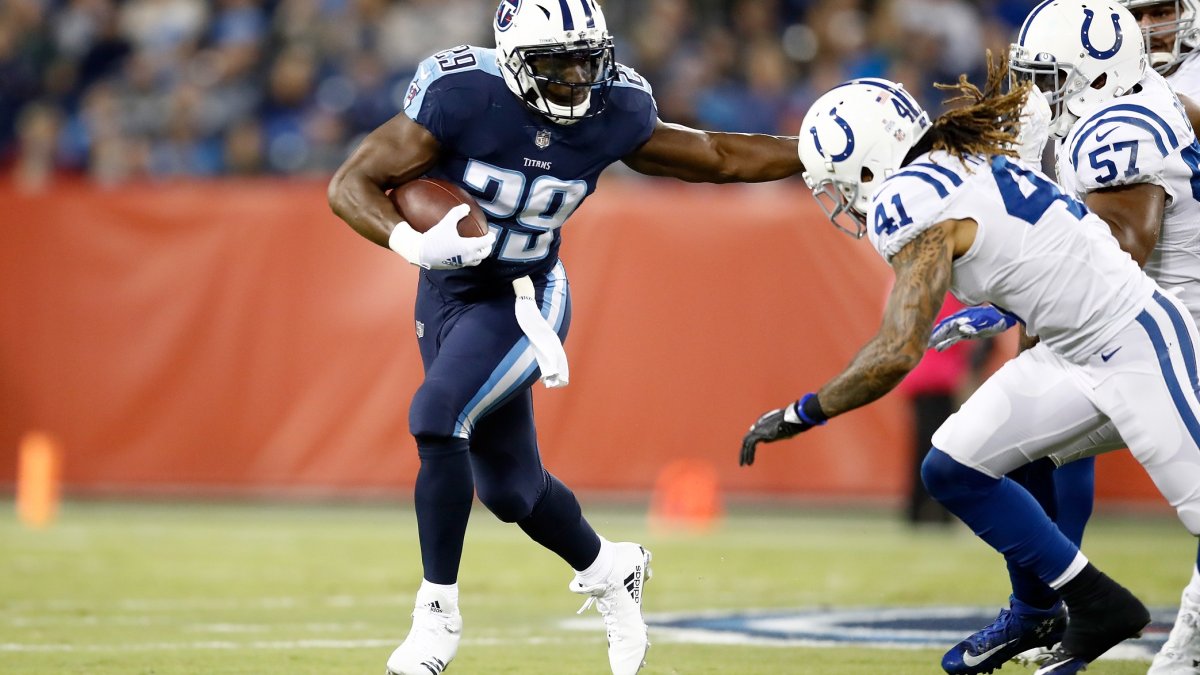Our season-long trade value chart is no long pertinent, so we’ve shifted gears and are now focused on dynasty trade strategies. Last week’s column took at look at quarterbacks. This week, we’re examining trading running backs in dynasty leagues.
It’s pretty straightforward: We’ll overview some strategies you should keep in mind when a running back is involved in a dynasty league trade.
I’ll also use some real-life examples from the PFF Fantasy dynasty league, which features both current and former staff members.
Dynasty running backs: ‘Youth’ is younger than you think
Younger is obviously better in dynasty leagues, but it’s most important at the running back position.
Quarterbacks can last 10-15 years on your dynasty team. A good wideout could last up to 10 years. Ditto for tight ends.
But your typical RB1 won’t last for more than a few seasons.
Here’s a paragraph from my article on quarterbacks: “The top fantasy running backs in 2012 were Adrian Peterson, Doug Martin, Arian Foster, Marshawn Lynch, Alfred Morris, Ray Rice, C.J. Spiller, Jamaal Charles, and, well, you get the picture.”
Take a look at my article from this offseason looking at running back performance by age. The average number of games played among running backs with 150-plus attempts starts to decline after the age of 25. Average fantasy PPG peaks at age 25.
The adage is that running backs should be off your dynasty roster by age 30. That’s not a bad rule of thumb, but you’ll want to start thinking of moving on once they are 27, and in most cases, you probably will have wanted to move on by the time they are 28.
Some real-life trades:
Here are a couple of trades involving running backs that went down in the PFF Fantasy Friends and Family League this year:
- Team 1 gives up DeMarco Murray, 2018 Round 4 rookie pick
- Team 2 gives up 2018 Round 1 rookie pick
- Team 1 gives up 2017 Round 2 and Round 5 rookie picks, 2018 Round 3 rookie pick
- Team 2 gives up Duke Johnson, Doug Martin
The trade involving Murray took place after Week 5 of this year. (I would know — I’m the one that traded Murray away) One of the teams in the league desperately needed a decent running back, and I was looking to get value for Murray while I still could. Murray has been a decent RB2 this year, so it has definitely hurt my team in the short-term to not have him, but he’s also 29 and set to lose more work to Derrick Henry in future seasons.
The takeaway here is not to focus on Murray, but on the essence of the trade and the strategy behind it. I knew that it would be difficult for me to move Murray for a first-round rookie pick after the season. Veteran running backs are always much less attractive with another year under their belts. That’s when the chatter of “Will Derrick Henry be the lead back next year?” begins.
My advice: Trade your aging running backs during the season to a team in contention. That’s the best way to get the best price.
The second trade example here happened during the rookie draft. Johnson, then just 23 (now 24), is the clear centerpiece of the trade. His youth and value in a PPR league helped Team 2 stockpile several rookie picks, including a high pick (Round 2).
Running backs aren’t that valuable in dynasty
Great running backs can obviously help you win in dynasty for a long time. But guess what? So can great quarterbacks, wideouts, and tight ends.
Good running backs tend to only be good for a few years, and the churn rate is insane. So what does this mean for dynasty leagues? It means you should be very wary not to overinvest in a running back, even if they are young and promising.
Running backs are obviously important, but things can turn around very quickly in dynasty. This happens for a few reasons:
- A ton of new running backs enter the scene each year, including those drafted later in the real NFL draft
- Running backs can make an impact on Day 1. They typically start performing well sooner than other positions.
- Real-life churn rate is fast, so a backup running back — or even a third-stringer — can become a starter within a season
Mortgaging your future for one good player could hurt you from collecting several good running backs within a two- to three-year span.
Does this mean you should never trade away future assets for current returns (in the form of a running back)? Absolutely not; there’s nothing wrong with that. But in my experience, it can be easier to overpay for a running back than any other position only because their fantasy-goodness tends not to last that long.
Don’t be afraid to try to win it all
This section is my caveat to the above section.
I’m a huge advocate for stockpiling young picks in dynasty leagues, but you shouldn’t be afraid to try to win it all, either. Spending future draft capital on an aging running back might not be the greatest thing in the long term, but if it helps you win a championship, that’s why you play the game.
And remember: Just because you traded for a player doesn’t mean you can’t trade him away a year or two later. Think of it as a lease.



 © 2025 PFF - all rights reserved.
© 2025 PFF - all rights reserved.